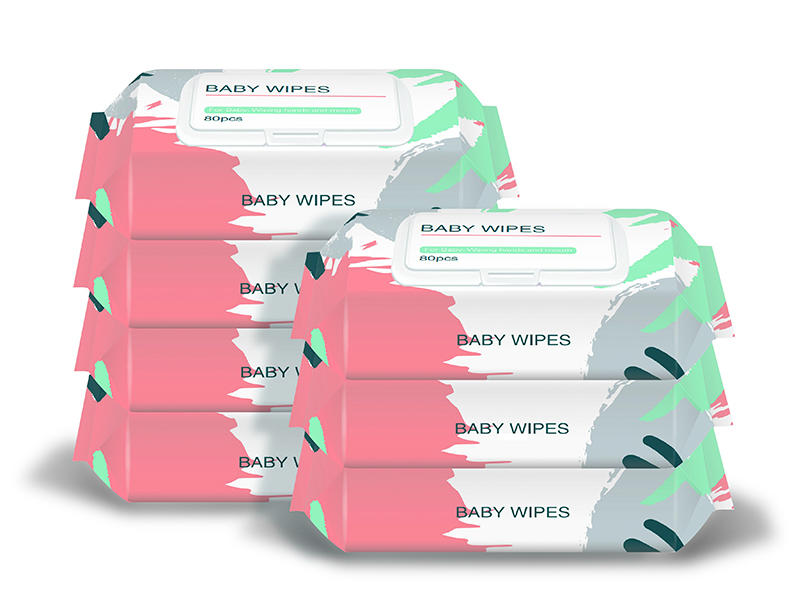Hot air-through nonwoven fabric is a widely used material in industries such as hygiene, medical, filtration, and packaging due to its softness, breathability, and versatility. One of the key distinctions in this material is its structure—whether it is single-layer or multi-layer. Understanding the differences between these two types is crucial for manufacturers, buyers, and end-users to select the most suitable option for their applications.
1. Definition and manufacturing process
Single-layer hot air-through nonwoven fabric consists of a single bonded web of fibers, produced by passing a uniform fiber layer through a hot air chamber. The heat causes the fibers to bond at their intersections, creating a cohesive fabric. This method is efficient and cost-effective, making single-layer fabrics common in disposable products like wipes and light-duty hygiene items.
Multi-layer hot air-through nonwoven fabric is made by combining two or more fiber layers before or during the bonding process. These layers can be identical or different in composition, depending on the desired properties. The multi-layer structure enhances strength, absorbency, and barrier performance, making it suitable for more demanding applications such as medical drapes and premium hygiene products.
The manufacturing process for multi-layer fabrics is more complex, often requiring additional bonding steps or specialized machinery. However, the added functionality justifies the increased production cost in many cases.
2. Structural differences
The most apparent difference between single-layer and multi-layer hot air-through nonwoven fabrics is their thickness and density.
- Single-layer fabrics are thinner and more uniform in structure, providing consistent softness and breathability.
- Multi-layer fabrics are thicker, with distinct layers that can be engineered for specific functions, such as a soft top layer for skin contact and a denser middle layer for liquid absorption.
Another structural distinction is fiber distribution. Single-layer fabrics have a homogeneous fiber arrangement, whereas multi-layer fabrics may incorporate different fiber types or orientations in each layer. For example, one layer could be made of fine fibers for smoothness, while another contains coarser fibers for strength.
3. Performance and functional differences
The choice between single-layer and multi-layer hot air-through nonwoven fabrics depends largely on performance requirements.
Strength and durability
- Single-layer fabrics are generally less durable, making them ideal for lightweight applications where high strength is not critical.
- Multi-layer fabrics exhibit superior tensile strength and abrasion resistance due to their reinforced structure, making them suitable for heavy-duty uses.
Absorbency and liquid management
- Single-layer fabrics have moderate absorbency, sufficient for light spills or everyday wipes.
- Multi-layer fabrics can be designed with gradient absorption, where one layer quickly wicks moisture while another retains it, making them ideal for diapers and medical pads.
Breathability and comfort
- Single-layer fabrics offer higher breathability due to their uniform and open structure.
- Multi-layer fabrics can balance breathability with liquid control, depending on layer composition.
Barrier properties
- Single-layer fabrics provide minimal resistance to liquids or particles.
- Multi-layer fabrics can incorporate barrier layers to block fluids, bacteria, or dust, making them useful in medical and protective applications.
4. Applications and suitability
The differences in structure and performance dictate where each type of hot air-through nonwoven fabric is used.
| Application | Single-Layer Fabric | Multi-Layer Fabric |
|---|---|---|
| Disposable wipes | √ Preferred | × Less common |
| Baby diapers (top sheet) | √ Common | √ Enhanced versions |
| Medical drapes and gowns | × Limited use | √ Preferred |
| Filtration materials | √ Basic filters | √ High-efficiency |
| Packaging cushioning | √ Lightweight use | √ Heavy-duty use |
5. Cost and production considerations
Single-layer hot air-through nonwoven fabric is more economical to produce due to its simpler manufacturing process and lower material usage. It is often chosen for high-volume, cost-sensitive applications.
Multi-layer hot air-through nonwoven fabric requires additional processing steps, increasing production costs. However, the enhanced functionality often justifies the expense in premium or specialized products.
6. Future trends and developments
As demand for high-performance nonwovens grows, innovations in multi-layer hot air-through nonwoven fabrics are expected to increase. Developments may include:
- Eco-friendly multi-layer fabrics using biodegradable fibers.
- Smart layering with integrated sensors or antimicrobial properties.
- Hybrid structures combining hot air-through bonding with other techniques like spunlace for added benefits.
The choice between single-layer and multi-layer hot air-through nonwoven fabrics depends on the intended application, performance requirements, and budget. Single-layer fabrics are lightweight, cost-effective, and suitable for everyday disposable products. Multi-layer fabrics offer superior strength, absorbency, and barrier properties, making them ideal for medical, hygiene, and industrial uses. Understanding these differences ensures optimal material selection for various industry needs.
By analyzing structure, performance, and applications, manufacturers and buyers can make informed decisions about which type of hot air-through nonwoven fabric best meets their requirements. As technology advances, multi-layer fabrics are likely to see further innovation, expanding their role in high-performance nonwoven solutions.


 中文简体
中文简体 English
English Беларуская
Беларуская 한국어
한국어 Français
Français 日本語
日本語 русский
русский Español
Español












